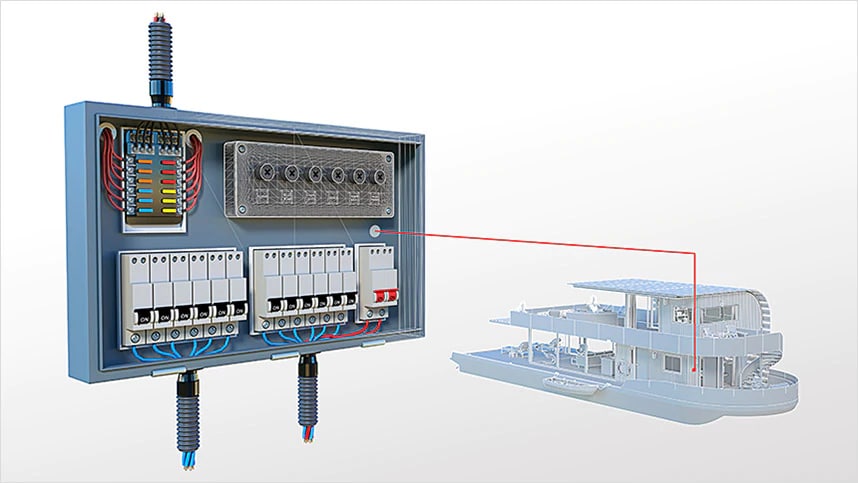Improving Industrial Electrical Design for Large-Scale Operations
Improving Industrial Electrical Design for Large-Scale Operations
Blog Article
Ingenious Electric Design Providers for Modern Facilities
As metropolitan settings grow increasingly complex, integrating modern technologies such as clever grids and sustainable energy sources becomes vital. These advancements not only assure to enhance power consumption but also foster durability versus future needs.
Relevance of Cutting-edge Electric Design
Cutting-edge electrical design plays a vital role in modern facilities, influencing not only performance yet additionally sustainability. As cities progress and the demand for energy increases, the demand for advanced electrical systems comes to be critical. These systems have to not only meet existing needs however additionally anticipate future development and technological advancements.
A well-executed electrical design can substantially lower power intake, therefore reducing functional expenses and lessening environmental effect. By including eco-friendly energy resources, such as solar panels and wind generators, cutting-edge styles can enhance energy independence and strength. Wise grid innovations permit for real-time monitoring and management of power circulation, optimizing efficiency and lowering waste.
Security is another essential facet of electrical design. Carrying out strenuous requirements and sophisticated innovations can minimize threats related to electrical failures, ensuring a safe and secure atmosphere for locals and businesses alike. Additionally, cutting-edge designs facilitate flexibility, allowing frameworks to incorporate arising technologies effortlessly.
Secret Patterns in Electric Design
As the landscape of electrical design continues to advance, several crucial trends are shaping the future of the market. One substantial fad is the assimilation of wise technology right into electrical systems. The spreading of the Internet of Things (IoT) has enabled real-time tracking and control of electric gadgets, improving performance and facilitating predictive upkeep.
Another fad is the growing emphasis on modular design. This strategy permits adaptable and scalable remedies, enabling framework to adjust to transforming demands without extensive renovations. Furthermore, the usage of innovative simulation devices and Building Details Modeling (BIM) is becoming increasingly prevalent, enhancing the design procedure and enhancing cooperation among stakeholders.
In addition, innovations in products scientific research are resulting in the growth of lighter, a lot more long lasting, and energy-efficient components. This advancement is especially crucial for high-performance buildings and infrastructure projects.
Lastly, there is a significant shift towards data-driven decision-making - electrical engineering design services. Leveraging data analytics aids developers enhance systems for efficiency and cost-effectiveness. Together, these fads signify a transformative period in electrical design, improving capability, sustainability, and resilience in modern infrastructure
Sustainable Power Solutions
Sustainable energy options are increasingly ending up being a crucial emphasis in electric design, mirroring a wider commitment to environmental obligation and resource performance. These solutions intend to lessen environmental effect while maximizing power intake in various frameworks, from household buildings to large business facilities.
One of the foremost strategies includes the combination of renewable resource resources, such as solar panels and wind generators, into electrical systems. This not only decreases dependency on fossil fuels yet also improves power durability. Furthermore, innovative energy storage space systems, such as innovative batteries, allow effective monitoring and distribution of energy, guaranteeing that excess power created during height manufacturing can be used during high need periods.
Additionally, energy-efficient design methods are being embraced to boost overall system efficiency. This includes using energy-efficient lights, cooling and heating systems, and clever published here structure technologies that keep track of and adjust power use based on occupancy and ecological conditions.
Smart Grid Technologies
The application of lasting energy options naturally results in the exploration of smart grid modern technologies, which play a critical role in updating electrical systems. Smart grids leverage progressed communication innovations and information analytics to improve the reliability, effectiveness, and sustainability of electrical energy distribution. By integrating electronic modern technology with typical grid facilities, these systems promote real-time surveillance, automated control, and enhanced decision-making capabilities.
Among the essential attributes of clever grids is their capability to accommodate eco-friendly power resources, such as solar and wind power. This versatility not just decreases reliance on nonrenewable fuel sources but likewise enables for a much more decentralized energy production version. Clever grids allow demand action programs, where customers can readjust their power he said usage based on real-time pricing, therefore advertising energy preservation and lowering peak tons needs.
Additionally, smart grid technologies enhance grid strength by making it possible for quicker identification and resolution of outages, eventually lessening downtime. With predictive maintenance and analytics, utilities can enhance operations and improve solution delivery. As neighborhoods and cities continue to advance, wise grid modern technologies are vital for developing a lasting and efficient electric infrastructure that meets the needs of modern society.

Future-Proofing Framework
To make sure lasting practicality and flexibility, future-proofing framework is necessary in the quickly developing landscape of electrical design services. As innovation advances and energy needs change, it is vital that electric systems are designed with versatility in mind. This entails including scalable remedies that can accommodate future upgrades without requiring substantial overhauls.

Additionally, sustainability needs to be a foundation of future-proofed layouts. Utilizing renewable energy sources, such as solar and wind, and enhancing energy efficiency minimize dependence on nonrenewable fuel sources, straightening with international initiatives to combat climate change.
Conclusion
Finally, innovative electrical design services play a crucial role fit contemporary infrastructure. By prioritizing flexibility, performance, and sustainability, these services resolve the developing needs of power systems. The combination of wise grid technologies and lasting power services improves strength and decreases operational prices. Future-proofing framework with sophisticated simulation tools and modular methods ensures that electrical systems continue to be receptive to changing requirements, eventually adding to a more lasting and energy-independent future.
A well-executed electric design can significantly decrease power consumption, therefore lowering operational expenses and lessening environmental effect. By integrating renewable power resources, such as solar panels and wind turbines, ingenious designs can boost energy freedom and resilience. Additionally, cutting-edge power storage space systems, such as advanced batteries, allow reliable monitoring and distribution of power, making sure that excess energy created during see this site peak production can be made use of during high need periods.
Smart grids enable demand feedback programs, where consumers can readjust their energy use based on real-time pricing, therefore promoting power preservation and lowering peak load needs. (electrical engineering design services)
As technology breakthroughs and energy needs shift, it is crucial that electric systems are developed with adaptability in mind.
Report this page